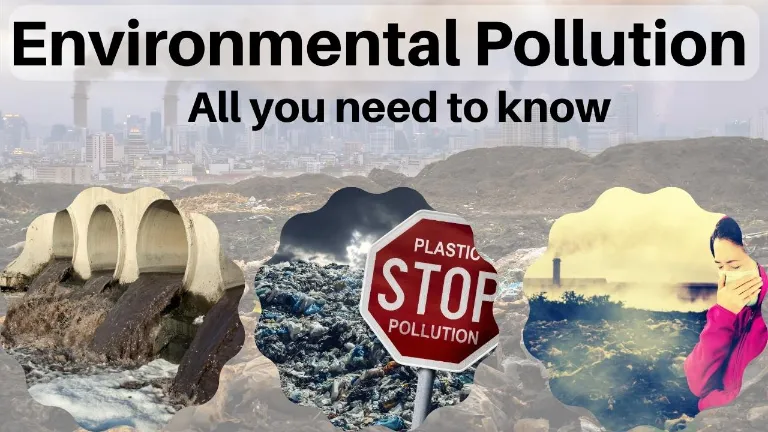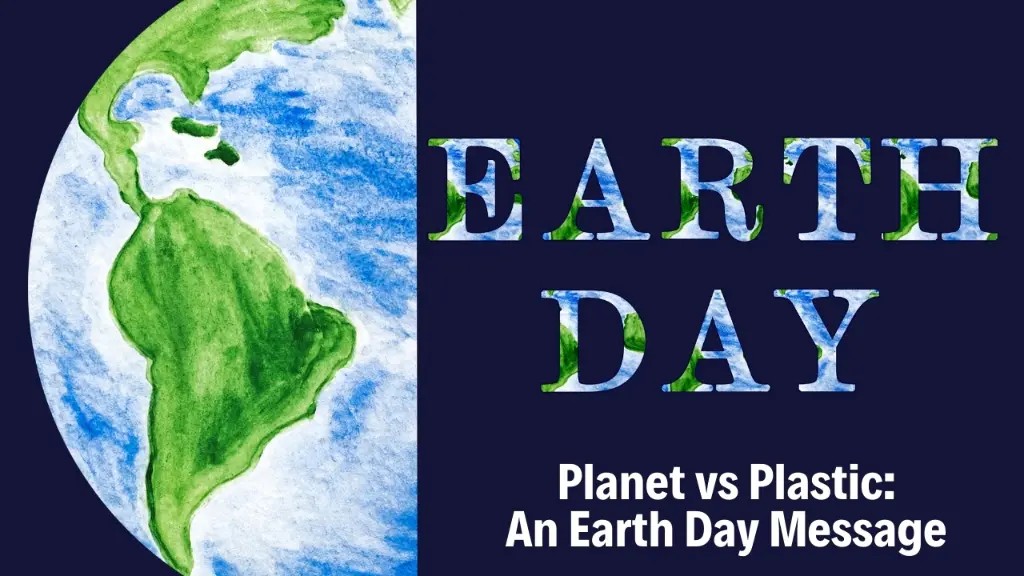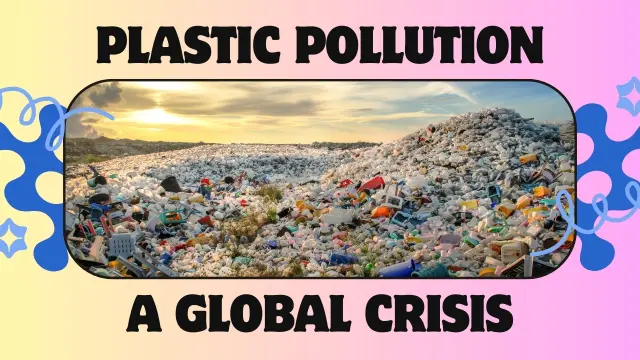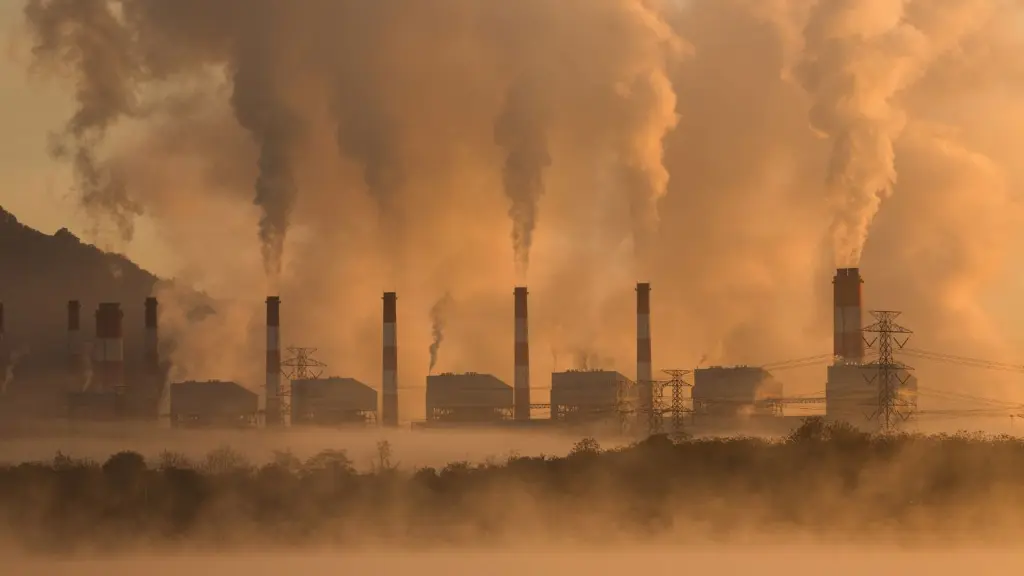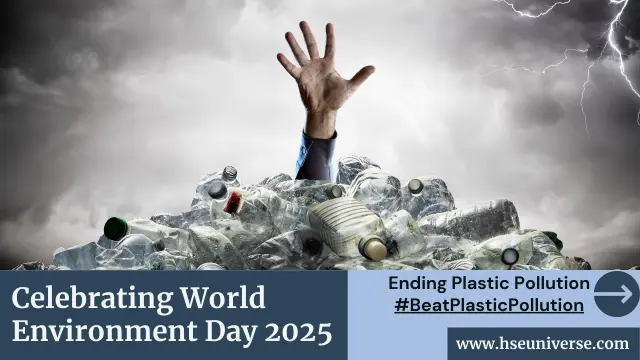Unveil the hidden truths of environmental pollution in this enlightening essay on environmental pollution in 1000 words or more. Gain insights into its impact on our world and explore effective strategies to combat this silent menace. Join the movement for change and be empowered to make a difference for a greener future.
1. Introduction of Environmental Pollution Essay:
Human population size has grown enormously over the period of time. This increase in population means an increase in demand for food, water, home, electricity, roads, automobiles and several other commodities.
This escalating demand has put tremendous pressure on our natural resources, leading to environmental pollution.
Not only by the use of natural resources but there are many other ways in which our environment gets polluted. Observing these increments in environmental pollution, the need of the hour is to check the degradation and depletion of our precious natural resources and causes of the pollution without halting the process of development.
2. What is Environmental Pollution?
Any undesirable change in physical, chemical or biological characteristics of air, water, and land which is harmful for the environment that can harm humans as well as other organisms directly or indirectly is called environmental pollution.
In the essence of the above statement pollution can take the form of chemical substances or energy, such as noise, heat or light.
3. What are Pollutants?
A pollutant is a substance or energy introduced into the environment that has undesired effects, or adversely affects the usefulness of a resource. Pollutants can be either naturally occurring or human-made contaminants.
A simple definition will be substances that cause pollution are called Pollutants.
3.1 Natural pollutants include:
Volcanic ash, pollen, and salt etc.
3.2 Human-made pollutants include:
- Air pollutants: These include gases such as carbon monoxide, nitrogen oxides, and sulfur dioxide; and particulate matter such as dust, soot, and smoke.
- Water pollutants: These include chemicals such as lead, mercury, and arsenic; and organic matter such as sewage and agricultural runoff.
- Land pollutants: These include hazardous waste, construction debris, and agricultural chemicals.
4. Types of Pollutants or Classification of Pollutants:
4.1 On the Basis of Disposal
4.1.1 Non Biodegradable Pollutants:
The pollutants that cannot be broken into smaller pieces or particles by the action of decomposition are said to be non biodegradable pollutants. As the name itself suggests that it cannot be degraded.
The most common example of this type of pollutants is plastic. Similarly the objects like aluminium packs, mercury compounds, compounds of phenols, glass, D.D.T.(dichloro-diphenyl-trichloroethane), benzene, BHC (benzene hexachloride) pesticide and many more.
While using them we might think it’s just so little that it’s not going to affect the environment, since it is non biodegradable. Oovertime little by little it gets collected and causes a great deal to the environment. Even in low concentrations these pollutants are harmful for the environment and harm increases with their increasing concentration.
4.1.2 Biodegradable Pollutants:
After listening to the biodegradable first thought that came into mind is that the substance be broken into smaller pieces and can be degraded in the environment. If it can be degraded, then how could it cause pollution and become a pollutant?
See, the thing about biodegradable pollutants is that it is a concentration dependent pollutant i.e. to a some extent of the concentration of these substances they can be utilized as nutrients and acts as useful substances. But if these materials enter the environment in very large quantities then they cannot be degraded completely and become a pollutant.
Let’s take an example to understand it. We all have the capacity to eat a certain amount of food at a time. If we take an optimum amount of food in our plate then it will be beneficial but if we take too much, iit will be wasted. Same principle applies with these pollutants. Low concentration is beneficial but increased concentration is just a waste and causes pollution.
Domestic waste, sewage, paper, wood, livestock waste are such examples of biodegradable pollutants.
4.2 On the basis of the form in which they persist:
4.2.1 Primary pollutants:
These types of pollutants are capable of polluting the environment in the form they are released in the environment. There will not be any physical or chemical changes in their property. Primary pollutant examples are:- DDT, Carbon monoxide (CO), nitrogen dioxide(NO2), Sulfur dioxide(SO2), etc.
4.2.2 Secondary pollutants:
These are formed by the chemical reaction among primary pollutants. Due to chemical and physical changes in primary pollutants; they now turn into secondary pollutants.
This process of formation of secondary pollutants from primary pollutants is known as synergism. The important thing here to consider is that secondary pollutants are more harmful and toxic than primary pollutants. Examples of such pollutants are:- Photochemical Smog, London smog, Peroxyacetyl nitrate (PAN), etc.
4.3 On the basis of existence in nature:
4.3.1 Quantitative pollutants:
These are the pollutants that naturally occur in the environment but they become a pollutant when their concentration reaches beyond the threshold value. Like nowadays the increasing amount of Carbon dioxide (CO2) is acting as a pollution. Actually it is not a pollutant, However, being considered as a pollutant because of its concentration.
Examples of such pollutants are:- CO2, nitrogen oxide(NO), etc.
4.3.2 Qualitative pollutants:
These types of pollutants do not occur in the environment naturally. Instead, they are introduced to the environment by human activities. Since they are not found naturally, their low concentration level also causes pollution.
Let’s take an example for better understanding. As you may be aware that there are so many substances that are naturally found in our system (body) but there is presence of venom in our body. Therefore, a tiniest amount of it is harmful for us. Same can be said for the environment. The examples of this type of pollutants are:- fungicides, herbicides, D.D.T. etc.
5. Categories of Pollution:
Based on the source; pollution can be categories as:
- Point Source Pollution and;
- Nonpoint Source Pollution.
5.1 Point source pollution:
Point source pollution comes from a single, identifiable source, such as a factory or sewage treatment plant.
Some examples of point source pollution include:
- Factory emissions: Factories can release harmful pollutants into the air, water, and land.
- Sewage treatment plant discharges: Sewage treatment plants can release wastewater that contains harmful bacteria and nutrients.
- Oil spills: Oil spills can release large amounts of oil into the environment, harming marine life and coastal habitats.
5.2 Nonpoint source pollution:
Nonpoint source pollution comes from many different sources, making it more difficult to identify and control.
Some examples of nonpoint source pollution include:
- Agricultural runoff: Agricultural runoff can carry fertilizers, pesticides, and sediment into rivers, lakes, and streams.
- Urban runoff: Urban runoff can carry oil, grease, and other pollutants from streets, parking lots, and sidewalks into storm drains and waterways.
- Construction site runoff: Construction site runoff can carry dirt, debris, and chemicals into nearby waterways.
Both point source pollution and nonpoint source pollution can have a negative impact on the environment.
6. Types of Environmental Pollution:
There are many different types of pollution, including:
6.1 Air pollution:
in this pollution the air gets contaminated with harmful substances or gasses. Air pollution is mainly caused by human activities. The important thing to consider here is that it is concentrated in the inhabited and industrial complexes in the cities. Air pollution can cause a number of health problems, including respiratory problems, heart disease, and cancer.
Major components of the air pollutants are CO, unburnt hydrocarbon, methane, ethylene, Sulphur oxides and smoke.
There are also some secondary pollutants like Smog (smoke+fog) and Acid rain.
Air pollution also contributes to the greenhouse effect. Due to which the Earth’s temperature is rising gradually. Pollutants like CFC are responsible for ozone depletion.
6.2 Water pollution:
Contamination of water bodies (such as lakes, rivers, and oceans) with harmful substances (e.g. sewage, industrial waste, and agricultural runoff) are referred as Water Pollution.
Water pollution may lead to various health problems which include waterborne diseases (such as cholera and typhoid), gastrointestinal illness, respiratory problems, and cancer.
It may also damage ecosystems and make it difficult for people to access clean water.
6.3 Land pollution or soil pollution:
This is the contamination of land or soil with harmful substances, such as chemicals, heavy metals, and waste. Land pollution can have a number of negative impacts on the environment, including:
- Degradation of soil quality
- Reduced crop yields
- Increased risk of water pollution
- Harm to wildlife
- Human health problems
6.4 Noise pollution:
This is unwanted or excessive sound that can have negative effects on human health and the environment. Noise pollution may lead to variety of health problems, including:
- Sleep disturbance
- Hypertension
- Heart disease
- Irritability
- Loss of concentration
6.5 Light pollution:
This is the brightening of the night sky caused by artificial light. Light pollution can have a number of negative impacts on the environment, including:
- Disruption of natural cycles
- Decreased visibility for astronomers and wildlife
- Increased energy consumption
7. Causes of Pollution:
There are many causes of pollution, both natural and human-made. Some of the most common causes of pollution include:
7.1 Fossil fuel combustion:
Burning fossil fuels, such as coal, oil, and natural gas, releases a variety of pollutants into the air, including carbon dioxide, nitrogen oxides, sulfur dioxide, and particulate matter. These pollutants can contribute to air pollution, acid rain, smog, and climate change.
7.2 Agricultural practices:
The use of pesticides, fertilizers, and herbicides in agriculture can pollute soil, water, and air. Pesticides can harm wildlife and contaminate food supplies. Fertilizers can contribute to nutrient pollution in waterways, which can lead to algae blooms and oxygen depletion. Herbicides can kill beneficial plants and insects.
7.3 Industrial processes:
Industrial processes, such as mining, manufacturing, and energy production, can release a variety of pollutants into the environment. These pollutants can include heavy metals, solvents, and other chemicals that can harm human health and the environment.
7.4 Waste disposal:
Improper waste disposal can pollute soil, water, and air. Landfills can release methane, a greenhouse gas, into the atmosphere. Sewage treatment plants can release wastewater that contains pollutants into waterways.
7.5 Vehicle emissions:
The burning of gasoline and diesel fuel in vehicles releases a variety of pollutants into the air, including carbon monoxide, nitrogen oxides, and particulate matter. These pollutants can contribute to air pollution, smog, and climate change.
7.6 Construction and demolition:
Construction and demolition activities can release a variety of pollutants into the air, including dust, noise, and fumes. These pollutants can harm human health and the environment.
7.7 Home and garden chemicals:
The use of pesticides, fertilizers, and other chemicals in homes and gardens can pollute soil, water, and air. Pesticides can harm wildlife and contaminate food supplies. Fertilizers can contribute to nutrient pollution in waterways, which can lead to algae blooms and oxygen depletion.
7.8 Pet waste:
Pet waste can contain harmful bacteria, parasites, and chemicals. When pet waste is not disposed of properly, it can pollute soil and water.
7.9 Fires:
Wildfires and other fires can release a variety of pollutants into the air, including smoke, ash, and soot. These pollutants can harm human health and the environment.
8. Effects of Pollution:
Pollution has a number of negative effects on the environment and human health. These effects are:
8.1 Harm to human health:
Pollution can cause a variety of health problems, including respiratory problems, heart disease, cancer, and birth defects. Children, the elderly, and people with underlying health conditions are particularly vulnerable to the effects of pollution.
8.2 Damage to ecosystems:
Pollution can damage ecosystems by killing plants and animals and disrupting food chains. It can also contribute to climate change, which can lead to more extreme weather events, such as floods, droughts, and heat waves.
8.3 Generation of greenhouse gases
Generation of greenhouse gases (such as carbon dioxide, trap heat in the atmosphere etc.) which causes the Earth’s temperature to rise leading to climate change.
8.4 Economy:
Pollution can cost businesses money in terms of increased health care costs, lost productivity, and damage to property. It can also discourage tourism and investment.
9. Solutions to Pollution:
Collectively we can take several actions or take necessary steps to reduce pollution, including:
9.1 Reduce our reliance on fossil fuels:
We can use more sustainable forms of transportation, such as walking, biking, and/or public transportation whenever possible thus reducing our dependence on fossil fuels. We can also carpool or rideshare when we need to drive.
Moreover, we can also use energy-efficient appliances and light bulbs in our homes and businesses.
9.2 Recycle and Compost:
We can reduce the amount of waste we produce by recycling and composting. Recycling helps to reduce the amount of waste that goes to landfills, and composting helps to reduce the amount of methane gas that is produced in landfills.
9.3 Reduce our consumption of goods and services:
We can reduce our consumption of goods and services by buying less stuff and repairing things instead of throwing them away. We can also choose to buy products that are made from sustainable materials and that are produced in a sustainable way.
9.4 Support businesses that are committed to environmental sustainability:
We can support businesses that are committed to environmental sustainability by buying their products and services. We can also contact businesses and let them know that we value their commitment to environmental sustainability.
9.5 Use less water:
We can use less water by taking shorter showers, fixing leaky faucets, and watering our lawns less often.
9.6 Reducing waste production:
Reducing the amount of waste that is produced can help to reduce pollution from waste disposal.
9.7 Dispose of hazardous waste properly:
Hazardous waste should be disposed of properly, not by dumping it in the trash or down the drain.
9.8 Plant trees:
Trees help to clean the air and water, and they also provide shade and reduce noise pollution.
9.9 Picking up after your pet:
Picking up after your pet can help to prevent pet waste from polluting soil and water.
9.10 Improving agricultural practices:
Using less pesticides, fertilizers, and herbicides can help to reduce pollution from agriculture.
9.11 Using less toxic household and garden chemicals:
Using less toxic household and garden chemicals can help to reduce pollution from home and garden chemicals.
9.12 Preventing wildfires:
Preventing wildfires can help to reduce pollution from wildfires.
10. Conclusion:
Environmental pollution poses a significant threat to our planet and its inhabitants. The rapid growth of human population and increased demands for resources have led to the degradation of our natural environment. Pollution, whether it is air, water, soil, or noise pollution, has far-reaching consequences on ecosystems, human health, and the overall well-being of our planet.
It is imperative that we take immediate action to mitigate pollution and protect our environment. By reducing our reliance on fossil fuels, promoting sustainable practices in industries, adopting cleaner technologies, and implementing stricter regulations, we can make a positive impact on reducing pollution levels.
Education and awareness also play a crucial role in addressing environmental pollution. By raising awareness about the causes and consequences of pollution, we can encourage individuals, communities, and governments to take responsibility and make conscious choices to reduce their environmental footprint.
Please click the link to read our essay on World Environment Day 2023.
For future updates, suggestion and discussion, please connect with us on Facebook, Twitter & Linkedin.
